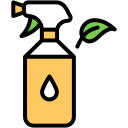Sustainable Upholstery Cleaning Techniques
Eco-Friendly Cleaning Solutions
Plant-Based Detergents
Plant-based detergents are increasingly popular for sustainable upholstery cleaning because they harness natural enzymes and surfactants instead of synthetic chemicals. These detergents are specially formulated to tackle stains and odors while remaining gentle on fabrics and safe for indoor air quality. Their effectiveness comes from ingredients like citrus extracts, baking soda, and essential oils—each offering cleansing power without toxicity. As biodegradable products, plant-based detergents don’t persist in waterways or soil, ensuring a minimal environmental effect. By replacing petroleum-derived cleaners with plant-based options, users can achieve professional-grade results sustainably.
Homemade Cleaning Solutions
Homemade cleaning solutions offer a highly sustainable choice for upholstery care by using readily available ingredients such as vinegar, baking soda, and lemon juice. These combinations can effectively lift stains, dissolve grime, and neutralize odors while being entirely safe for most fabric types. Making your own cleaning concoctions reduces reliance on single-use packaging and commercial additives, further decreasing your environmental footprint. Home preparation allows customization of recipes to suit specific fabrics and stain types, ensuring thorough cleaning without the harshness of industrial chemicals.
Low-VOC Cleaners
Low-VOC (volatile organic compound) cleaners represent a modern leap toward healthier homes and workplaces. VOCs are chemicals that easily evaporate into the air and can cause respiratory problems and contribute to indoor air pollution. By selecting upholstery cleaners with minimal or zero VOC content, households can significantly reduce air quality risks. These cleaners rely on advanced formulations that exclude the most damaging compounds, maintaining both cleaning effectiveness and safety. Using low-VOC cleaners aligns with sustainable living goals by prioritizing indoor health and reducing harm to the wider ecosystem.
Dry cleaning techniques for upholstery present an efficient solution that explores alternatives to soaking fabrics with water. Specialized cleaning powders, foams, and encapsulation solutions capture and lift dirt from upholstery fibers without excess moisture. After application, the dirt-filled agents are easily vacuumed away, leaving behind clean and refreshed furniture. This method ensures rapid drying times, minimizing the risk of mold or mildew growth and reducing unnecessary water consumption. Dry cleaning also extends the life of sensitive fabrics that might degrade if over-exposed to water.

Biodegradable and Sustainable Materials
Reusable cleaning cloths, such as those made from organic cotton or bamboo, present a waste-reducing alternative to disposable wipes and paper towels. These cloths can withstand numerous wash cycles while maintaining their cleaning efficacy. Using high-quality reusable cloths not only lowers the demand for single-use products but also mitigates the pollution associated with paper manufacturing. Additionally, such cloths are typically gentle on delicate upholstery fabrics, ensuring that your furniture retains its appearance and integrity after each cleaning session.

